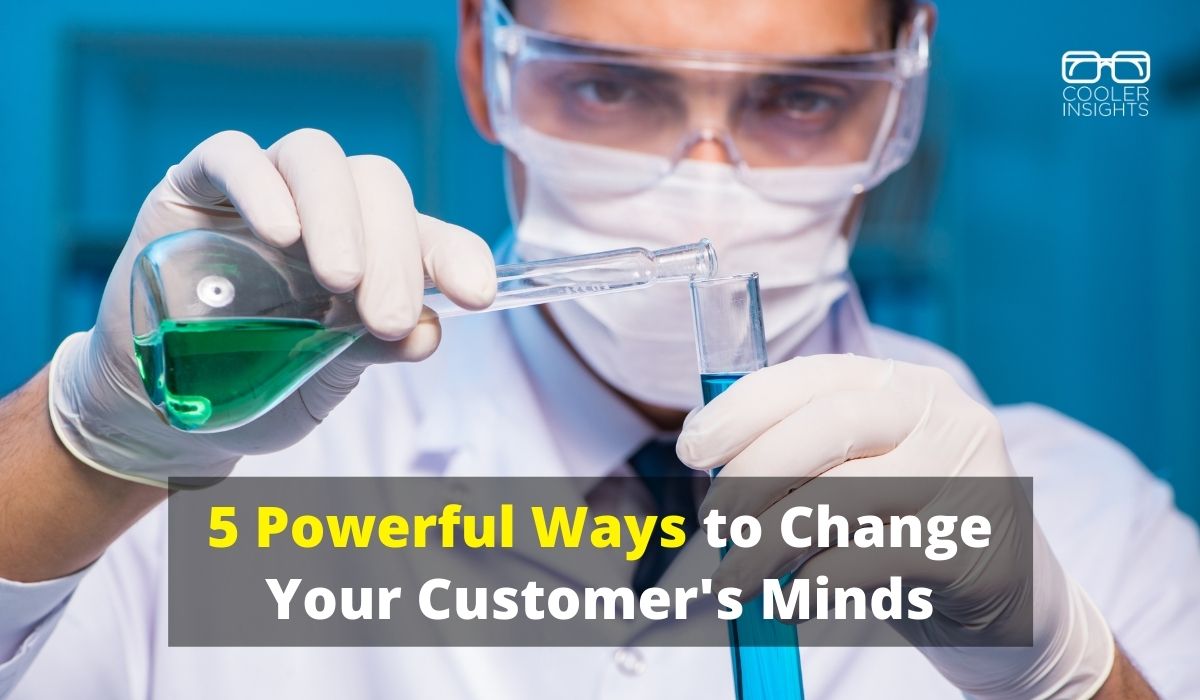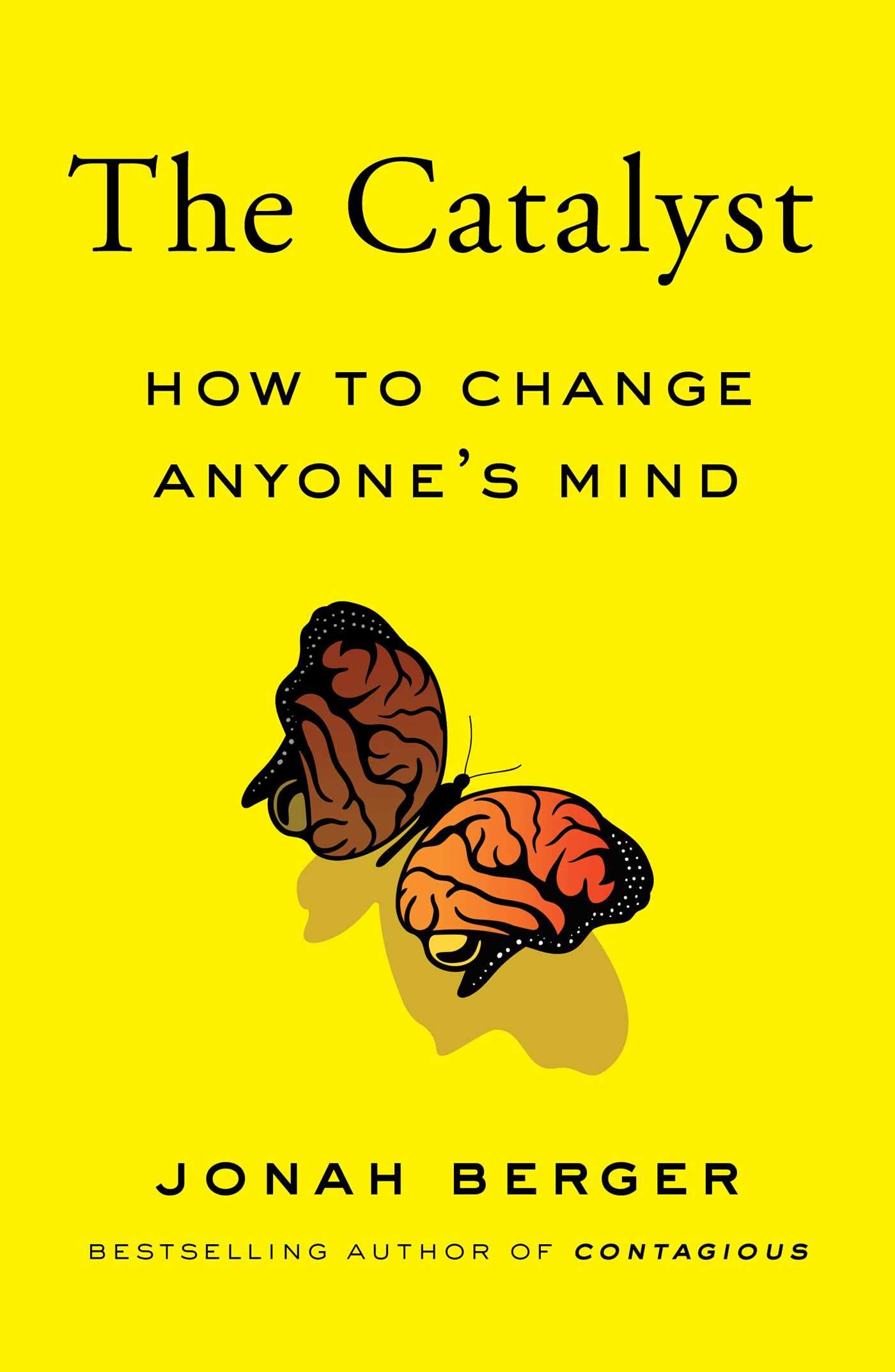
Hit a roadblock trying to change the minds of stubborn potential customers? Wish to employ the techniques of marketing psychology to unlock change?
Rather than push harder by stepping on the gas, consider “unlocking the parking brake” instead.
As long-time fan of behavioural science, neuromarketing, and marketing psychology, I’m intrigued by how behavioural insights can be deployed in the world of digital marketing.
Thanks to Wharton professor Jonah Berger’s latest book The Catalyst — How to Change Anyone’s Mind, we now have a new toolkit to persuade anybody to change. (You can read my summary of his previous book Contagious here.)
Crisply written and rigorously researched, the book provides a formula for changing the minds of people who are stuck in their ways due to inertia.
The Five Principles of Becoming a Catalyst
In this article, you will learn the five principles needed to overcome consumer inertia and lower the barriers to change.
These follow the mnemonic REDUCE as follows:
- Reduce Reactance: When pushed, people will push back. Find ways to encourage people to convince themselves that the idea belongs to them.
- Ease Endowment: People are attached to the status quo—amplify the costs of not-switching.
- Shrink Distance: Consider their zone of acceptance to change. Ask for less, not more.
- Alleviate Uncertainty: Make it easier to try, with free samples, lenient return policies and trials.
- Find Corroborating Evidence: Get proof from multiple credible and relevant sources
By following these techniques to catalyse change, you’ll find it easier to persuade your customers, improve the effectiveness of your campaigns, and reduce resistance.
Let us go through each of them right now!
#1 Reactance — Lower Their Anti-Persuasive Radar
What is the best way to convince teenagers to stop smoking? No, the answer isn’t in to warn them of its health risks.
On the contrary, telling them not to do something makes that very activity more alluring. It has the opposite effect and makes them more likely to do it!
To overcome reactance, you need to give people the freedom and autonomy to choose. Allow for agency—get them to persuade themselves.
There are four ways to do so:
- Provide a Menu: Give them a limited set of options—not too many, or you’ll get confusion
- Ask, Don’t Tell: Instead of telling them what they need, ask them what they want. Use surveys and questions.
- Highlight a Gap: Show the disconnect between what people want, and what they currently do.
- Start with Understanding: Seek first to understand, and then to be understood. Demonstrate empathy.
In the example of teen smoking rates in the US, Chuck Wolfe got teens involved in a Teen Tobacco Summit and simply laid out the facts: “Here is what the tobacco industry is doing. You tell us what you want to do about it.”
This resulted in a series of “truth” ads that cut teen smoking in half, and eventually become a worldwide model for youth tobacco control.
#2 Endowment — Help Them Let It Go
We are all used to what we have—the way we work, the smartphones we use, or the food that we eat.
Also known as the status-quo bias, it stymies efforts by marketers to get consumers to change. Due to loss aversion, your prospect consider potential losses to loom larger than gains with any change.
To overcome their switching costs, you’ll need to consider the following:
- Significant Gains: Demonstrate that changing gives them considerably greater benefits than staying with what they have
- Surface Cost of Inaction: Find ways to amplify the downsides of inaction—show what they are losing with the status quo
- Burn the Ships: Sometimes, you need to take drastic action to make the costs of inertia even higher
In short, consider how you can help people let go of old habits and preferences, rather than adopt new ones.
#3 Distance — Shrink It
Trying to get a prospect to make a drastic change is often difficult, if not impossible. Overwhelming them with a barrage of information showing the superiority of your product or service may backfire.
Do also consider the effects of the confirmation bias—people are likely to seek and trust information supporting their current beliefs.
To rectify this, offer a more moderate position relative to where they currently are. Meet them in their zone of acceptance and not stretch to their region of rejection. There are three ways to do so:
- Find the Movable Middle: Are there potential customers who are less extreme and more likely to “swing” over to you? Test and learn with a sample audience. Find the subgroup more likely to change.
- Ask for Less: Don’t make a huge ask your first request; instead, get them to make smaller commitments (eg lower cost products or services) and scale up later
- Switch to an Unsticking Point: Use deep canvassing to learn what your prospect’s life is like, and find a point of commonality
#4 Uncertainty — Reduce or Eliminate
People are naturally risk-averse. They do not wish to try new things due to the “uncertainty tax”—they prefer the sure thing rather than riskier option with a higher upside.
To get people to “un-pause” so that they’ll give you a chance, consider giving them a chance to try and make your it easy to do so. The good thing about trials is that once a person tries (and likes) your product or service, inertia may keep them there!
There are four ways to improve trialability:
- Freemium: Provide a free version just like Dropbox and Google Drive does for cloud storage
- Lower Upfront Costs: Make the initial payments low (or non-existent)—you only pay later. A good example is free shipping.
- Drive Discovery: Use test drives and trial periods to reduce risk
- Make it Reversible: Offer money-back guarantees, generous return policies, and warranties
#5 Corroborating Evidence — Provide Relevant Sources
When determining how much evidence to provide a prospect, consider if they hold a weak attitude or strong attitude towards the item.
A weak attitude may include your preference for certain words over others. A strong attitude could be your religious or political beliefs. The latter are far more resistant to change.
Often, people may not change due to the translation problem, where people have to make inferences based on the information presented. How does it affect them? How much do you truly know them?
Consider the following:
- Get Strength in Numbers: Provide multiple sources of others who are also customers, but consider some diversification.
- Right Timing: Consider when to show your corroborating evidence to your prospects, and the timing for doing so. The closer the frequency of your messages, the more likely they are to convert.
- For Weak Attitudes, Spread Your Resources: For purchase decisions that are less influenced by inherent beliefs (say like switching shampoo), consider spreading out to more markets
- For Strong Attitudes, Concentrate: For more fundamental core beliefs, you need to focus your corroborating evidence. Provide more proof, and target more specific audiences.
Conclusion
In the world of chemistry—one which I used to belong to many decades ago in school—a catalyst is a substance that increases the rate of reaction without itself being consumed.
It does this by reducing the barriers to chemical changes, and makes it easy for chemical reactions to go through.
Your role as a marketer is to persuade and convince your prospects to buy from you. When change is hard, however, consider adopting these 5 principles to “make it easier for them to buy.”
Have you applied any of these principles in your work? I’d love to read your thoughts.
(And yes, please do get the book. Its a great read!)


Hi,
thanks for sharing the psychology behind marketing. i really appreciate the way you describe .